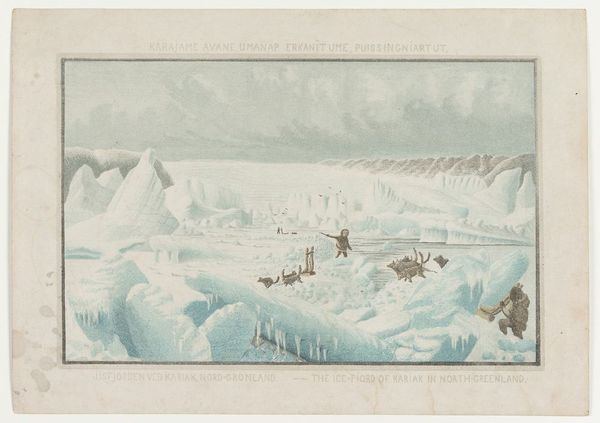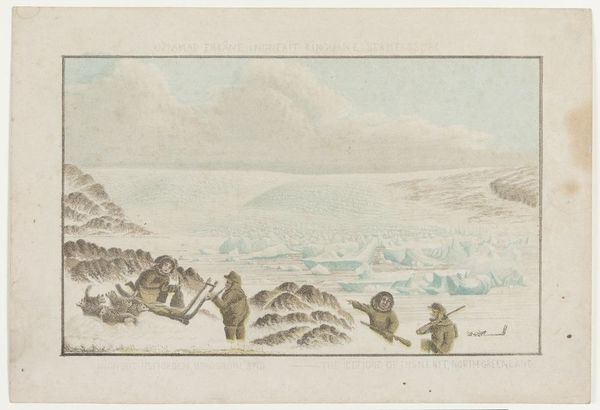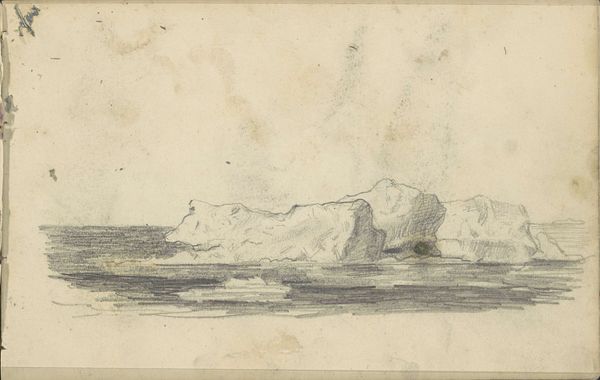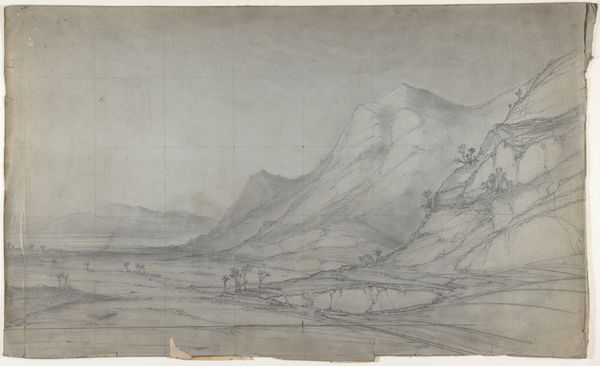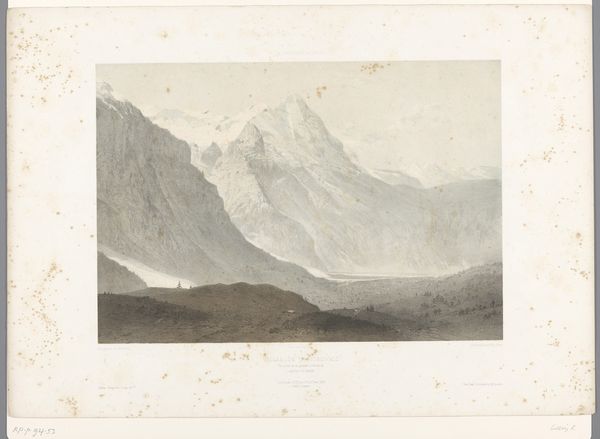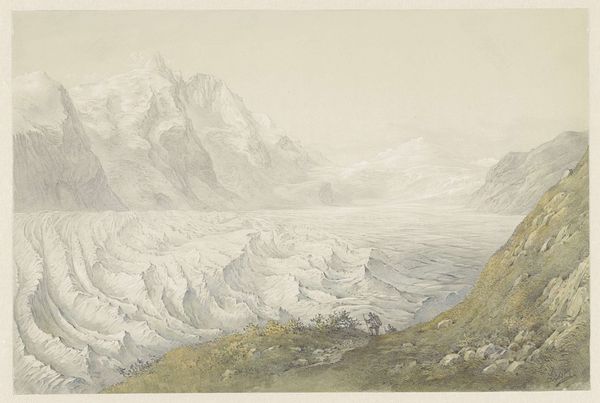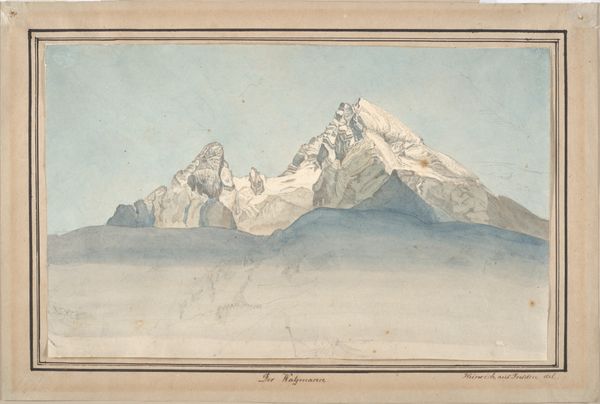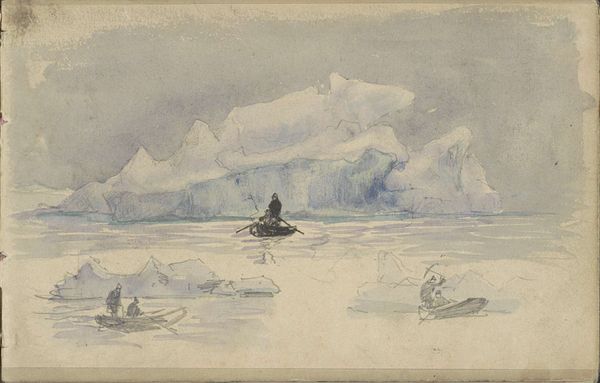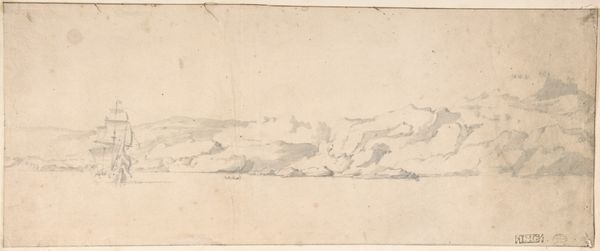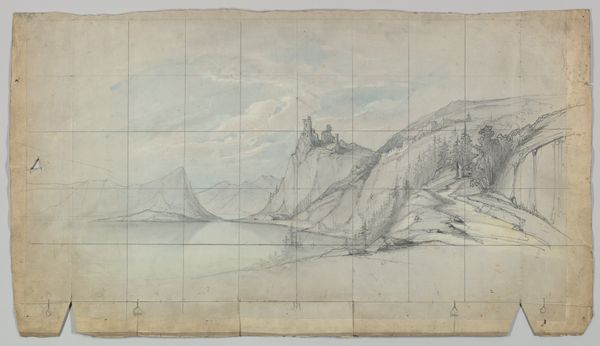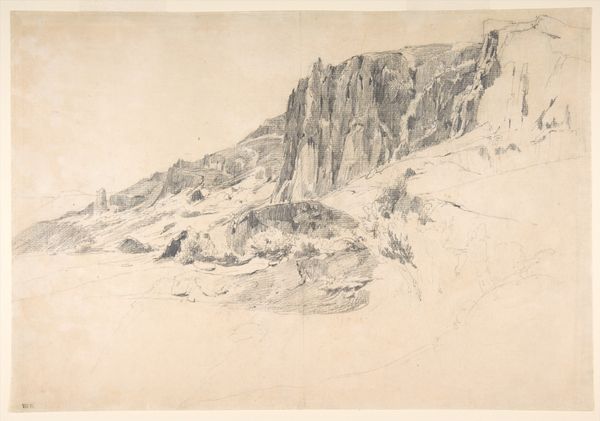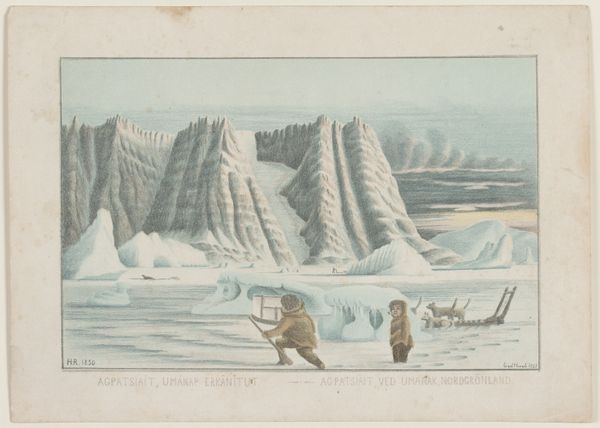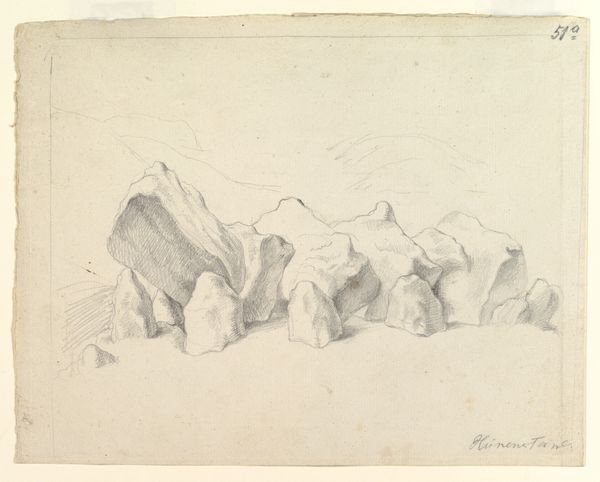
Copyright: Public Domain
Curator: Ah, the cool distance! I'm struck by the sense of chilly vastness in this design. Editor: Indeed. We're looking at Eugène Cicéri’s "Design for a Stage Set," likely created between 1830 and 1890. It’s currently held at the Metropolitan Museum of Art. The medium involves watercolor, drawing, and what appears to be a print underlay, all contributing to the atmospheric perspective. Curator: Atmospheric is right. It feels… icy. All blues and greys. A watercolor romanticism! Look closely—almost obscured by the watercolor wash, the suggestion of a grid under-drawing peers through from below. I wonder about the production context of stage designs then, these ephemeral illusions intended to transport viewers so fully. Editor: Right, the theatre was huge, pardon the pun, but also, that underdrawing tells a lot about production in Cícéri's studio and the labor required to meet theatrical demands of the era. Watercolours can be quite demanding. Curator: Demanding but delicate! This rendering is deceptively simple in its tonal range. It’s romantic, yes, but in a muted, melancholic way. And did you notice, there is a party strolling on the front; barely visible human figures are going across the frozen plains, with mountains ahead. Editor: The subtle deployment of watercolour for underpainting lends depth and realism to the artificiality of theatre; however ephemeral, these scenographies commanded material resources. Curator: Precisely, the relationship between the visible labor in creating a temporary stage and the actual hard, less-glamorous conditions to sustain and access such spectacle interests me! How very opposite... Editor: A divergence that speaks volumes. Makes you wonder who among that audience reflected upon those labor realities. Curator: Right! Next time, perhaps we can consider who might be in that auditorium that we ourselves participate in every single day... Anyway! It’s an illusion of the sublime that reminds us of the artistry, the labor, and the often obscured material costs embedded within such romantic ideals. Editor: Precisely, a confluence that allows us to both contemplate the landscape on display, the means by which it came to be and consider how these two can exist, if awkwardly, within one design. Thank you!
Comments
No comments
Be the first to comment and join the conversation on the ultimate creative platform.
